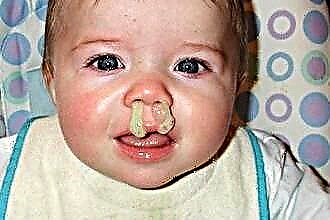Ear hygiene is important not only for a person's neat appearance, but also for maintaining the health of the hearing analyzer. At the same time, diligently cleaning the ear canals of wax can also damage. Moreover, excessive fanaticism in this matter often leads to various diseases and even to hearing loss. How to get rid of sulfur accurately and correctly?

Otolaryngologists say that for daily hygienic care, it is enough to rinse your ears with warm water and dry them with a towel. If a sulfur plug has formed in the ear canal, you should consult a doctor. However, many people consider sulfur plug not a very good reason to go to the hospital. Is it possible to remove the sulfur plug at home by yourself?
The only method of removing sulfur plugs that most ENT doctors consider acceptable is to rinse the ears with hydrogen peroxide.
In this article, we will tell you in detail how to rinse the ear with hydrogen peroxide, whether it is possible to drip hydrogen peroxide into the ear of children, and what precautions should be taken so that cleaning the ears with hydrogen peroxide is absolutely safe.
When is ear canal cleaning required?
Before flushing your ears with hydrogen peroxide, make sure you really need it. The fact is that earwax is not dirt at all. Sulfur is known to have many functions:
- Protection against water ingress (due to the content of many water-repellent fats).
- Repelling insects that may accidentally enter the ear canal.
- Protection against bacteria. Sulfur has an acidic environment that inhibits the growth and reproduction of bacteria. In addition to the acidic pH, immunoglobulins, the immune proteins that make up its composition, determine the protective properties.
- Moisturizing the skin (similar to sebum elsewhere on the body).
If a person gets rid of sulfur too often, then the glands producing it will react to the constant deficiency of such an important secret, and will secrete it even more actively. That is why people who too often clean their ear canal with cotton swabs suffer from earwax hypersecretion as a result. Pouring hydrogen peroxide into your child's ear or yourself more often than necessary can cause you to experience the same effects.
Thanks to the self-cleaning mechanism of the ear canal, the sulfur masses formed deep in the ear canal gradually move to its edge. The accumulation of sulfur forms a dark ring around the entrance to the ear canal. You should only get rid of this ring, without trying to penetrate the ear as deep as possible.
 Penetrating with a cotton swab into the ear canal, you push the sulfur mass into the depths and compress it. This is what usually leads to the formation of sulfur plugs - dense accumulations of sulfur that dull a person's hearing.
Penetrating with a cotton swab into the ear canal, you push the sulfur mass into the depths and compress it. This is what usually leads to the formation of sulfur plugs - dense accumulations of sulfur that dull a person's hearing.
How does peroxide wash away sulfur?
Cleaning your ears with hydrogen peroxide is possible due to the properties of this drug. It is known that this substance - H2O2 - is a good solvent. Once in the ear, hydrogen peroxide breaks down the fats that give earwax its density. In a liquid state, sulfuric mass easily flows out of the ear canal. The foaming capacity of this substance also plays a role. Interacting with the enzyme catalase, which is contained in almost all tissues, H2O2 chemically decomposes into water H2O and oxygen O2. This releases many oxygen bubbles, converting the liquid into foam. This foam helps to easily get rid of various impurities, dead cells, etc. Due to this property, peroxide is widely used in medicine for treating open wounds.
Thus, hydrogen peroxide for the ears plays the role of a surfactant - it helps to separate the wax from the skin of the ear canal, soften it and bring it out.
Getting rid of sulfur correctly - instructions
Can I clean my ears with hydrogen peroxide at home? You can, if you do it carefully and following all the rules. It is best to carry out this procedure not on your own, but with someone close to you. Cleansing your ear “blindly” runs the risk of getting too deep into the ear canal and damaging the delicate skin or eardrum.
How to flush your ears with hydrogen peroxide:
- Prepare tissues, cotton swabs or swabs and 3% hydrogen peroxide, which can be purchased at any drug store.
- Lie in bed and turn your head to the side. 3% hydrogen peroxide is instilled into the ear canal. How to put hydrogen peroxide in your ear correctly? Use an eyedropper for this. You can also use a syringe, but blow the liquid out of it slowly, avoiding injection under strong pressure.
- What happens if you drop hydrogen peroxide into your ear? That's right, a large amount of foam will appear. The peroxide will sizzle and possibly even tingle - this is normal. But if you feel a strong burning sensation or pain, the procedure should be stopped immediately. Stand up, rinse the ear canal with water and dry it with a tissue.

If washing the ear with hydrogen peroxide causes severe pain, it is strongly recommended to consult an ENT doctor, as this may indicate various diseases - eczema of the ear canal, sepsis, the presence of wounds, etc.
- If the procedure does not cause discomfort, remain in the supine position for 15 minutes. Then stand up and remove the earwax along with the fluid that flows out. Ask loved ones to remove the remaining wax and fluid from the ear canal. To do this, use a soft cotton swab on a stick.
It should be noted that H2O2 with a concentration not exceeding 3% is suitable for washing.
When washing sulfur plugs in children, peroxide is often diluted with water in a 1: 1 ratio, reducing the concentration to 1.5%. The effect of H2O2 on the skin is in many ways similar to that of alkalis, and its high concentrations may well cause a chemical burn.
Who is this method not suitable for?
It is important to understand that flushing with hydrogen peroxide is not an ear treatment, but a hygiene procedure. It is not a remedy for otitis media and other diseases; if the ear is blocked, hydrogen peroxide will not help either. Usually, a feeling of congestion is associated with inflammation and swelling of the Eustachian tube (Eustachitis) or the middle ear (otitis media). The cause of inflammatory processes in the organs of hearing is almost always an infection spreading from the upper respiratory tract - the nasopharynx and pharynx. The presence or absence of earwax in the ear canal does not in any way affect the likelihood of developing otitis media.
Can hydrogen peroxide drip into the ear if there is a perforation in the eardrum? No, this method should not be used if the integrity of the tympanic membrane is violated.
Is it possible to instill hydrogen peroxide in the ear if a person suffers from psoriasis or eczema affecting the skin of the ears and ear canal? To prevent chemical burns and irritation of damaged skin, self-rinsing with H2O2 is not recommended in this case.
You can clean the ear canals in the described way no more than once a month.
If you have sulfur plugs, a course of such procedures may be required. Usually, to dissolve the cork, it is enough to repeat the H2O2 rinsing twice a day for 3-7 days.



